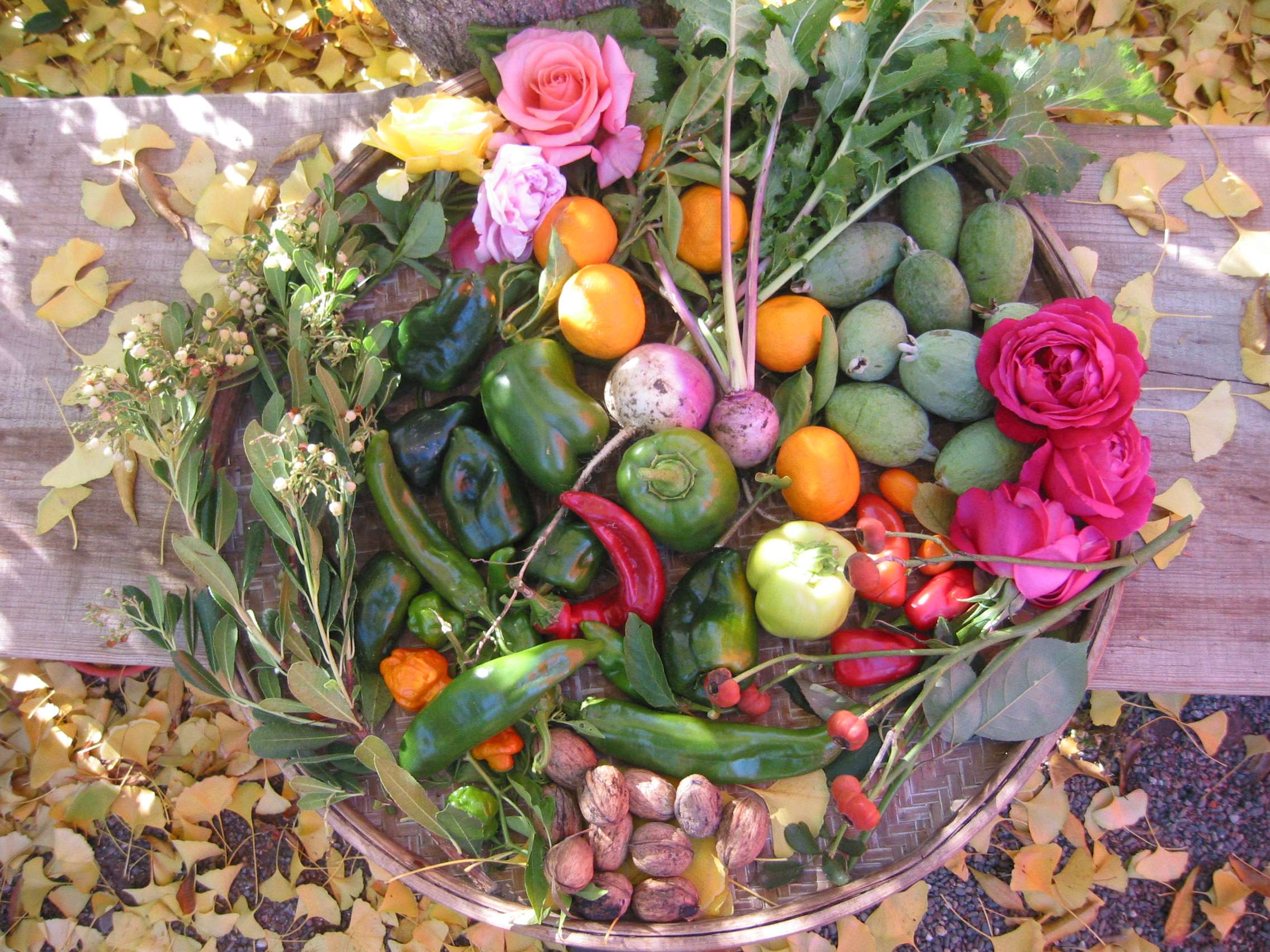The modern menu has become a mix of foods from around the world. But it is still heavy on the fruit, roots, and grains of our American natives—albeit eastern natives and plants originally domesticated from central and South America. Cranberry sauce, succotash, the starchy side dishes and pies all have American origins. Some of the plants can be grown here; others have special requirements that would make it difficult.
I have a vivid memory of a rather tense discussion between my father and grandfather about the origins of that hard, candied fruit that sticks in your teeth when you eat fruitcake. One said it was a citrus, the other said it was a melon. These were two proud men, each sure of his position. The oldest child was eventually dispatched upstairs to look it up in the encyclopedia. The answer is at the end.
So to help your family resolve these factual disputes, here is some basic information about the Thanksgiving comestibles!
Vegetables and snacks:
The colonists didn't have any of these!
Vegetable sticks:
* Carrot -- Daucus carota sativa, and
* Celery -- Apium graveolens dulce.
These are cool season annuals; celery is from Europe and Asia, and carrots are probably from Afghanistan. Planted in early fall for winter and spring crops. Celery is surprisingly easy to grow, but a little tricky to blanch for the pale stalks you see in the store. So garden celery is green and has strong flavor.Carrots require loose soil or the roots will be misshapen, and the seed takes a long time to germinate. So it is often planted together with'
* Radishes -- Raphanus sativus
From the Mediterranean. Family: Brassicaceae (Mustard). Radish seeds germinate in days, and are ready to harvest in 3 – 6 weeks. Planted in fall or early spring in loose soil. The carrot seeds will just be sprouting as you pull the radishes.
* Olives -- Olea europea
Small tree, grown in full sun. Easy, ornamental, drought tolerant. Common allergy plant.
From:
Mediterranean. Family: Oleaceae
Soaked in water, brine or lye to remove the bitter glucosides. Usually cured from green olives in California, then some are processed by bubbling air through the solution to make them turn black. Black (ripe) fruit are used for Italian and Greek-style olives.
Read more....

